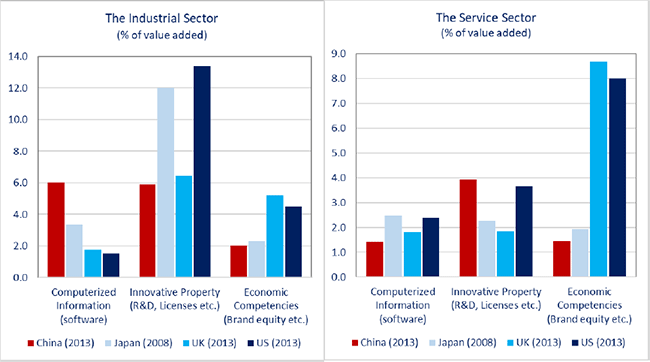| Author Name | Janet X. HAO (The Conference Board, New York) / Harry X. WU (National School of Development, Peking University / The Conference Board China Center, Beijing / Institute of Economic Research, Hitotsubashi University) |
|---|---|
| Research Project | East Asian Industrial Productivity |
| Download / Links |
This Non Technical Summary does not constitute part of the above-captioned Discussion Paper but has been prepared for the purpose of providing a bold outline of the paper, based on findings from the analysis for the paper and focusing primarily on their implications for policy. For details of the analysis, read the captioned Discussion Paper. Views expressed in this Non Technical Summary are solely those of the individual author(s), and do not necessarily represent the views of the Research Institute of Economy, Trade and Industry (RIETI).
Investment in today's intangible capital assets, such as software, R&D, brand equity, is a good indicator of the power of creativity and innovation in the future. After 40 years of rapid growth, China has arrived at a crucial stage in which only further technological advancement can help it better deal with the rise of labor cost and the slowdown of productivity growth in a progressively competitive international market. This motivates this study. Although it appears to be exceedingly difficult to avoid our estimation being affected by China's severe real estate bubbles and overinvestment, we find that China is still distant from the world leading economies in intangible investment. In 2013, China committed 8.1 percent of its value added in intangible investment, compared to 16.7 in the US and 13.9 in the UK. We also show that among major types of intangible investment, China focused more on computerized information, such as software, and innovative property, such as R&D, benefitted by government-engineered industrial and infrastructural projects, rather than economic competences such as brand equity that relies more on firms' own decision in a competitive market.


